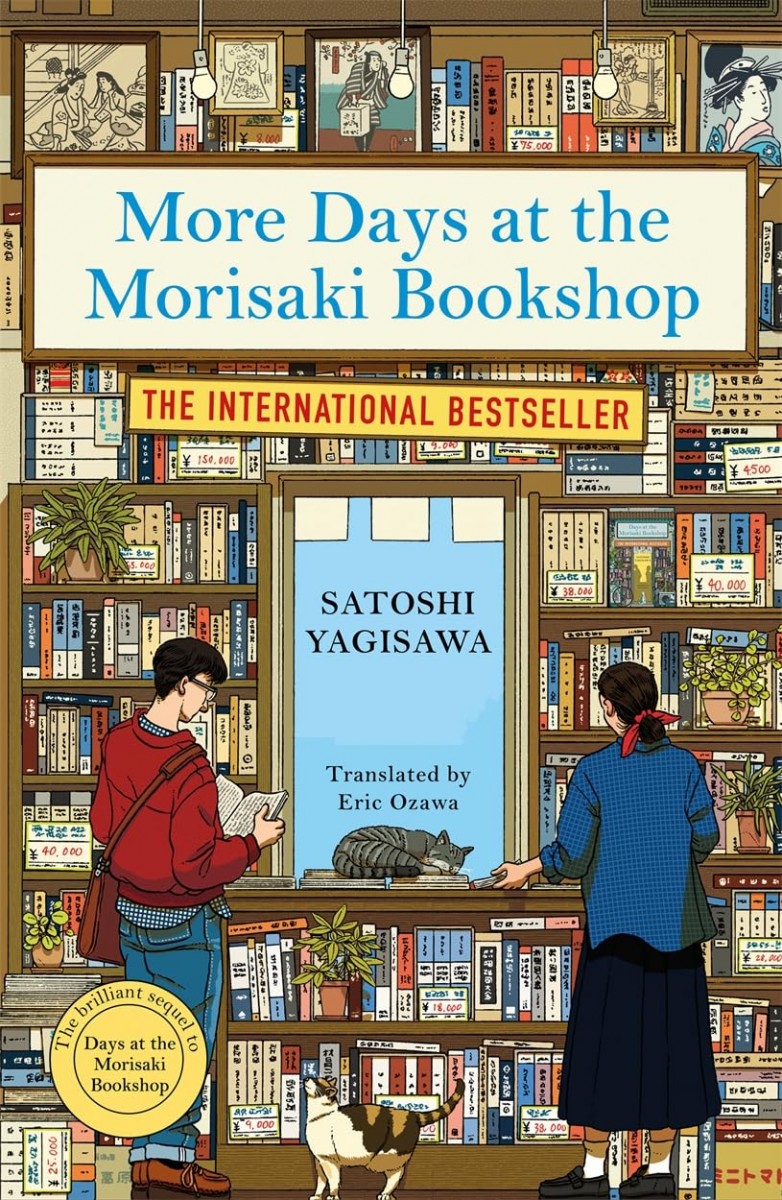‘More Days at the Morisaki Bookshop’ Is a Warm, Gentle Look at People
Just north of Tokyo’s Imperial Palace Gardens lies the district of Kanda-Jimbocho. It is home to several of Japan’s top publishing houses, built amid educational institutions, curry houses, art galleries and used bookstores. The bookstores, however, are the essence of Jimbocho. Numbering anywhere between 150 to 180, most bookstores focus on a particular subject. Some specialise in books on art, others on cinema and movie memorabilia. A handful offer books in foreign languages, including English. Plenty of stores, unsurprisingly, focus on old Japanese literature, offering works by the masters and books that may be rare.
The eponymous, fictitious bookshop in Satoshi Yagisawa’s novel More Days at the Morisaki Bookshop is based on one of these stores in Jimbocho book town. The store's owner is Satoru Morisaki, a man in his early 50s, but the narrator of the story is his 28-year-old niece Takako. In the prequel to this novel, Days at the Morisaki Bookshop, Takako had been a lost, lonely woman, retreating into herself after being dumped by her lover and subsequently losing her job. The family-run Morisaki Bookshop had become, willy-nilly, Takako’s refuge, and staying (as well as working) there for a few months had rejuvenated her. It had also introduced her to an entire set of characters, people who came to play an important role in Takako’s life, both in Jimbocho and beyond.

Satoshi Yagisawa's,
More Days at the Morisaki Bookshop (Translated by Eric Ozawa),
Manilla Press (2024)
More Days at the Morisaki Bookshop brings these characters back, along with the welcoming atmosphere of Jimbocho's bookshops. Takako is still the narrator and her uncle Satoru is still the very dedicated, seemingly indefatigable, owner of the family-run store that his grandfather had set up many decades earlier. Wth Satoru is his wife Momoko, who had abruptly left him some years back but had since returned. The love and camaraderie between the two is obviously inspiring for Takako, who admires Momoko’s cheerfulness and zest for life.
Also part of this canvas is the quiet little café named Saveur, which was where Takako got to know Wada, now her boyfriend. It was also the place where Takako made friends with the beautiful and charming Tomo, who worked briefly at Saveur, and with tongue-tied Takano, who still works at Saveur and is hopelessly, quietly, in love with Tomo.
When the story opens, Takako seems to be in a happy place. She is in love; she has a job that she enjoys, and which leaves her time to visit the bookstore occasionally. She has a good friend in Tomo, and her relationship with her aunt Momoko is especially warm. The bookstore is doing well.
But soon enough Takako finds herself, and those she loves, facing problems, big and small. Her relationship with Wada teeters into ambiguity. Tomo reveals an embarrassing secret that prevents her from reciprocating Takano’s feelings. And worst of all, a devastating revelation from Momoko upends the lives of Takako and Satoru.
More Days at the Morisaki Bookshop, like its prequel, uses everyday language, and revolves around relatable emotions and commonplace dilemmas. These are people like us with similar insecurities and problems. They deal with guilt and heartache, they are burdened by embarrassment and pain, and they have to learn to cope with the grief of bereavement. Their joys are like ours, the little things in life – a well-cooked meal with friends, a quiet conversation over coffee, a blue sky and the smell of sweet olive flowers.
Yagisawa’s language can sometimes feel a bit stilted, but the emotional depth makes up for it. For me, Days at the Morisaki Bookshop fell a bit flat, its narrative colourless and unable to fully engage the reader. However, More Days at the Morisaki Bookshop is a significant improvement, showing the growth Yagisawa has made since his debut. It remains a simple and uncomplicated tale with a small cast of characters, but it is also deeply touching – a story of love, friendship, family, and dealing with loss. There were moments while reading this book when I found my eyes welling up.
The core passion – the love for books – shines brightly throughout. It's not that books save lives or pull anyone back from the brink of despair, but they serve as a vivid and real backdrop. One person's life revolves around finding an elusive book, while another sets out to write one. Books are sought, books are bought and ultimately, they reflect real life.
As Takako puts it at the end:
‘Here in Tokyo’s neighborhood of secondhand bookstores is our little bookshop. It’s full of little stories. And it holds within its walls the thoughts and hopes and feelings of a great many people.’
More Days at the Morisaki Bookshop is a warm, gentle look at people. Not just book-lovers, authors, readers and booksellers, but people everywhere. The universality of this narrative and the kind wisdom it is often able to convey, is what makes this an accomplished, heartwarming work. While it is a sequel to the earlier book, it stands well on its own too.
Madhulika Liddle is a writer. Her most recent works are the historical novel An Unholy Drought and a non-fiction book, co-authored with Swapna Liddle, Gardens of Delhi.
This article went live on August ninth, two thousand twenty four, at thirty minutes past five in the evening.The Wire is now on WhatsApp. Follow our channel for sharp analysis and opinions on the latest developments.




